Starting on 27 May 2015, the Centre Pompidou is exhibiting a new presentation of its modern collection from 1905 to 1965, with a circuit featuring major milestones in the collection together with exhibition-dossiers (renewed every six months). The first stage in a major refurbishment project, this presentation now invites visitors to enter the museum via level 5 of the building,
and explore the history of art from the modern to the contemporary periodes.
« A new presentation of the museum’s modern collection is always an event, which highlights the importance and incomparable diversity of the Centre Pompidou’s well-stocked collection,» says the institution’s chairman, Serge Lasvignes. We have decided to focus on the major landmarks in the history of modern art from 1905 to the 1960s, and its significant turning points. Visitors will thus have all the keys to understanding how the spark of modernity appeared and set alight the entire world of art in the first half of the 20th century.»
A presentation highlighting great milestones in the collection
Educational and informative in its very conception, intended to communicate to the widest public the elements indispensable for an understanding, the new hang retraces the history of modern art as it is reflected in the iconic ensembles held by the Centre Pompidou. Organised in a number of major sequences, it begins with 1905 and ends on 1965.
Set along the visitor’s path through the new hang are a series of “dossier displays”, of varying format but on a single theme, that will enrich the experience of the visit, sharing the pedagogical ambitions of the main display but offering a more intensive and specialised approach.
Reorganised Spaces
The new hang of the modern collection takes advantage of a space reorganised so as to offer optimal clarity. Visitors now enter the Museum via Level 5 and follow the course of art history from the modern to the contemporary on Level 4, where a new hang of the Centre’s contemporary collections in Spring 2016 will follow on directly, establishing an unambiguous historical continuity between the two floors. Certain rooms on Level 5 have been reconfigured to ensure a more fluid circulation of visitors and a stronger sense of a distinct space. The new hang also sees the installation within the exhibition of a visitor study space.
A hang organised around major ensembles
Among the forty different rooms, the great, landmark ensembles in the Centre Pompidou’s collection as ever form the backbone, highlighting the achievements of artists and movements of inescapable importance. Organised in a number of major sequences, the display opens with Fauvism and Henri Matisse and gradually works its way to Sixties Abstraction, where the art begins to verge upon the contemporary in its concerns.
On either side of each of these major sequences, interpolations in the main narrative offering different perspectives, spaces have been devoted to more idiosyncratic but nonetheless crucial artists and movements. Thus, for the first time in the history of the Museum, a whole room has been devoted to Lettrism, a key avant-garde movement in post-war Paris, while not very far away one will find the structural elements of Jean Prouvé’s prefabricated buildings.
Architect Gae Aulenti’s ‘street’ still acts as a central visual axis, along which are placed key works from the collection, from Francis Picabia to Frank Stella, interacting with an architecture now more open to the exterior, the outside terraces that overlook the city regaining importance with the alterations that coincided with the rehanging.
Dossier displays
A major innovation introduced with this new hang, intended to offer the opportunity for closer study, these displays are left to the initiative and imagination of departmental staff and their eventual academic partners. Punctuating the principal narrative, each will offer a contribution on a common theme. Changing every six months, they will bring a new vitality to the display of the collection.
A room for ad hoc exhibitions
A space of 120 square metres has been set aside at a key location – the point of transition between the modern and contemporary collections – to house the Museum’s programme of short-term displays (usually of some 2 months duration) paying special tribute to individual artists or taking a closer look at works of particular contemporary interest.
Cover photo credits: MAN RAY, Marcel Duchamp, Obligation pour la Roulette de Monte-Carlo, 1924, Photographie, 8.9 x 11.9 cm, Dation en 1994, Collection Centre Pompidou, musée national d’art moderne, © Man Ray Trust / Adagp, Paris 2015
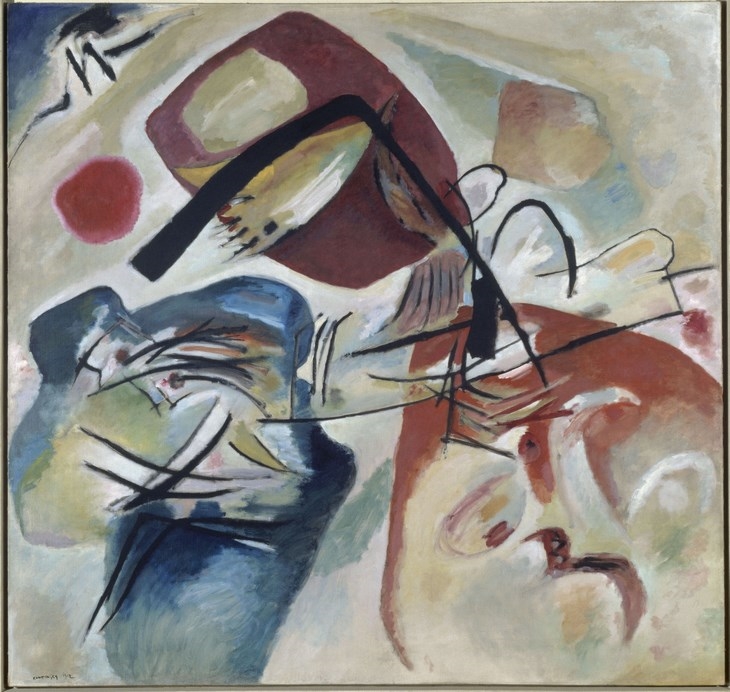 VASSILY KANDINSKY MIT DEM SCHWARZEN BOGEN (AVEC L?ARC NOIR), 1912 OEUVRE RÉALISÉE À MUNICH À L?AUTOMNE 1912 HUILE SUR TOILE, 189 X 198 CM DONATION DE MME NINA KANDINSKY EN 1976 COLLECTION CENTRE POMPIDOU, MUSÉE NATIONAL D?ART MODERNE MNAM-CCI/DIST. RMN-GP PHOTO : PHILIPPE MIGEAT, CENTRE POMPIDOU (C) DOMAINE PUBLIC
VASSILY KANDINSKY MIT DEM SCHWARZEN BOGEN (AVEC L?ARC NOIR), 1912 OEUVRE RÉALISÉE À MUNICH À L?AUTOMNE 1912 HUILE SUR TOILE, 189 X 198 CM DONATION DE MME NINA KANDINSKY EN 1976 COLLECTION CENTRE POMPIDOU, MUSÉE NATIONAL D?ART MODERNE MNAM-CCI/DIST. RMN-GP PHOTO : PHILIPPE MIGEAT, CENTRE POMPIDOU (C) DOMAINE PUBLIC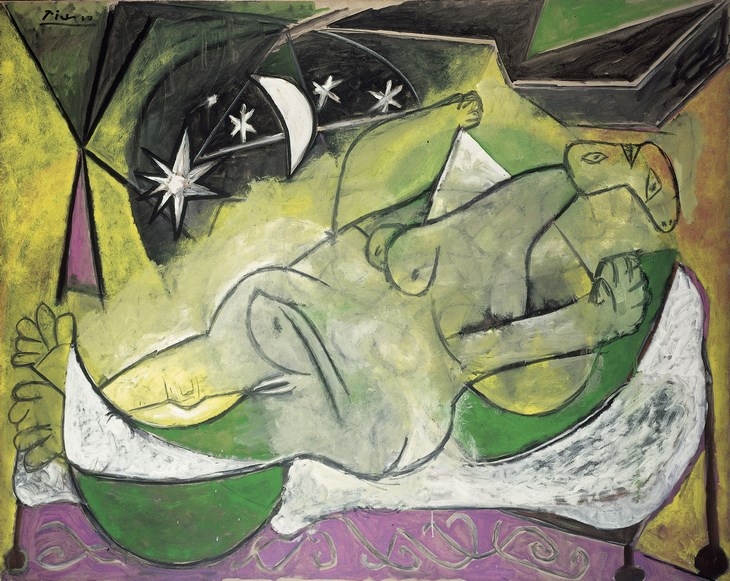 PABLO PICASSO FEMME NUE COUCHÉ, 1936 TITRE ATTRIBUÉ : NU ÉTOILÉ HUILE SUR TOILE, 130,6 X 162,5 CM DONATION LOUISE ET MICHEL LEIRIS, 1984 COLLECTION CENTRE POMPIDOU, MUSÉE NATIONAL D?ART MODERNE MNAM-CCI/DIST. RMN-GP (C) SUCCESSION PICASSO 2015
PABLO PICASSO FEMME NUE COUCHÉ, 1936 TITRE ATTRIBUÉ : NU ÉTOILÉ HUILE SUR TOILE, 130,6 X 162,5 CM DONATION LOUISE ET MICHEL LEIRIS, 1984 COLLECTION CENTRE POMPIDOU, MUSÉE NATIONAL D?ART MODERNE MNAM-CCI/DIST. RMN-GP (C) SUCCESSION PICASSO 2015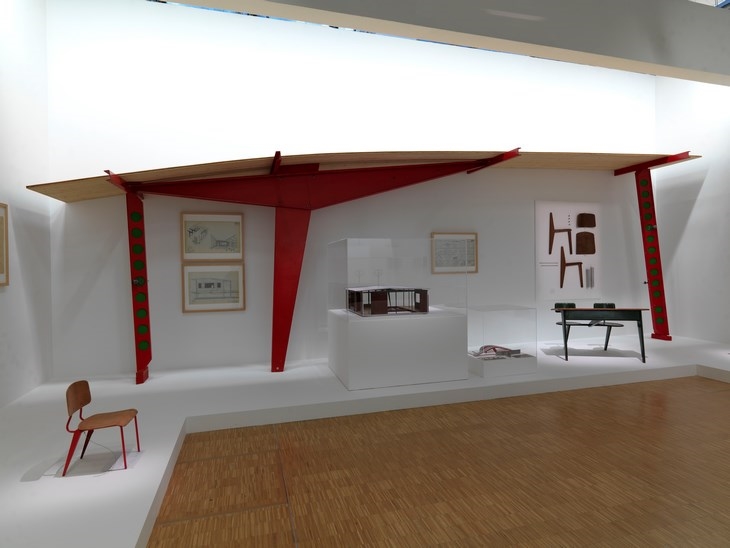 JEAN PROUVÉ PHOTO : PHILIPPE MIGEAT, CENTRE POMPIDOU (C) ADAGP, PARIS 2015
JEAN PROUVÉ PHOTO : PHILIPPE MIGEAT, CENTRE POMPIDOU (C) ADAGP, PARIS 2015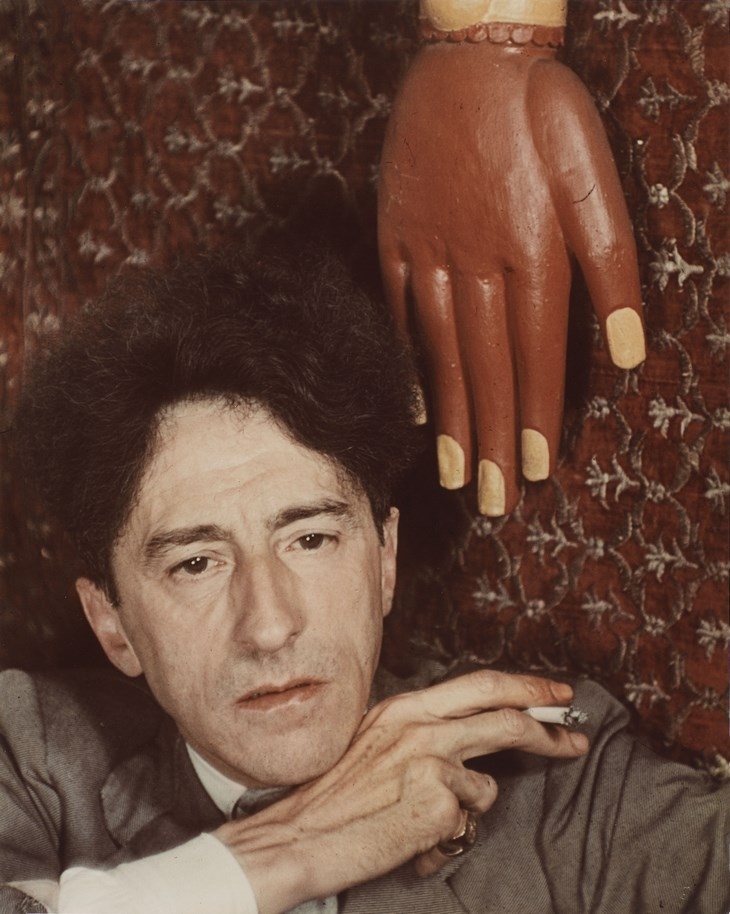 GISÈLE FREUD JEAN COCTEAU, PARIS, 1939 PHOTOGRAPHIE, 19 X 14,2 CM DONATION DE L?ARTISTE EN 1992 COLLECTION CENTRE POMPIDOU, MUSÉE NATIONAL D?ART MODERNE (C) ESTATE GISÈLE FREUND/ RMN GESTION DROIT D?AUTEUR/FONDS MCC/IMEC PHOTO : PHILIPPE MIGEAT, CENTRE POMPIDOU, MNAM-CCI, DIST. RMN-GRAND PALAIS / GISÈLE FREUND, REPRODUCTION SERVICE DE PRESSE/CENTRE POMPIDOU
GISÈLE FREUD JEAN COCTEAU, PARIS, 1939 PHOTOGRAPHIE, 19 X 14,2 CM DONATION DE L?ARTISTE EN 1992 COLLECTION CENTRE POMPIDOU, MUSÉE NATIONAL D?ART MODERNE (C) ESTATE GISÈLE FREUND/ RMN GESTION DROIT D?AUTEUR/FONDS MCC/IMEC PHOTO : PHILIPPE MIGEAT, CENTRE POMPIDOU, MNAM-CCI, DIST. RMN-GRAND PALAIS / GISÈLE FREUND, REPRODUCTION SERVICE DE PRESSE/CENTRE POMPIDOU![Archisearch - Giorgio DE CHIRICO Portrait [prémonitoire] de Guillaume Apollinaire, printemps 1914 Huile et fusain sur toile, 81,5 x 65 cm Achat, 1975 Collection Centre Pompidou, musée national d’art moderne Photo : Adam Rzepka/Centre Pompidou, MNAM-CCI/Dist. RMN-GP (c) Adagp, Paris2015](https://www.archisearch.gr/wp-content/uploads/old-site/giorgio-de-chirico.jpg) GIORGIO DE CHIRICO PORTRAIT [PRÉMONITOIRE] DE GUILLAUME APOLLINAIRE, PRINTEMPS 1914 HUILE ET FUSAIN SUR TOILE, 81,5 X 65 CM ACHAT, 1975 COLLECTION CENTRE POMPIDOU, MUSÉE NATIONAL D?ART MODERNE PHOTO : ADAM RZEPKA/CENTRE POMPIDOU, MNAM-CCI/DIST. RMN-GP (C) ADAGP, PARIS2015
GIORGIO DE CHIRICO PORTRAIT [PRÉMONITOIRE] DE GUILLAUME APOLLINAIRE, PRINTEMPS 1914 HUILE ET FUSAIN SUR TOILE, 81,5 X 65 CM ACHAT, 1975 COLLECTION CENTRE POMPIDOU, MUSÉE NATIONAL D?ART MODERNE PHOTO : ADAM RZEPKA/CENTRE POMPIDOU, MNAM-CCI/DIST. RMN-GP (C) ADAGP, PARIS2015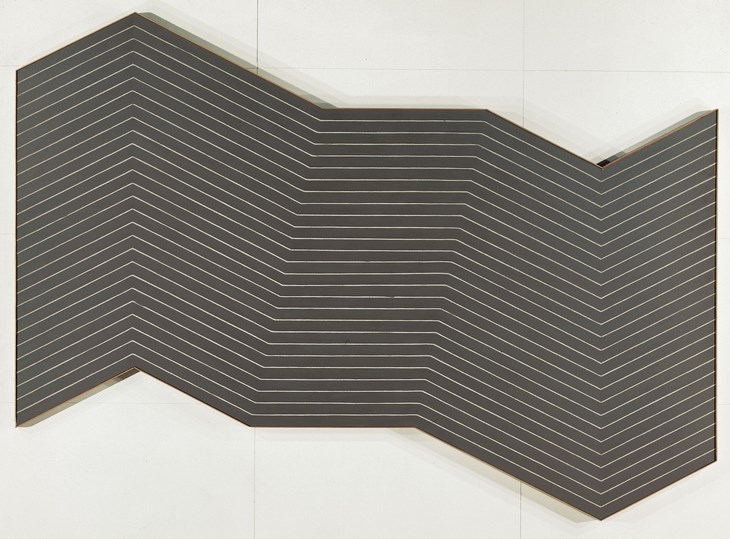 FRANK STELLA MAS O MENOS, 1964 POUDRE MÉTALLIQUE DANS ÉMULSION ACRYLIQUE SUR TOILE 300 X 418 CM ACHAT GRÂCE À LA PARTICIPATION DE LA SCALER FOUNDATION, 1983 COLLECTION CENTRE POMPIDOU, MUSÉE NATIONAL D?ART MODERNE MNAM-CCI/DIST. RMN-GP (C) ADAGP, PARIS 2015
FRANK STELLA MAS O MENOS, 1964 POUDRE MÉTALLIQUE DANS ÉMULSION ACRYLIQUE SUR TOILE 300 X 418 CM ACHAT GRÂCE À LA PARTICIPATION DE LA SCALER FOUNDATION, 1983 COLLECTION CENTRE POMPIDOU, MUSÉE NATIONAL D?ART MODERNE MNAM-CCI/DIST. RMN-GP (C) ADAGP, PARIS 2015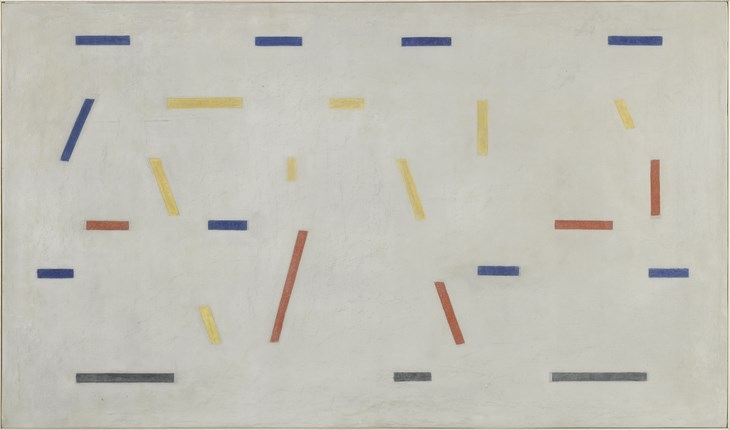 BART VAN DER LECK COMPOSITIE N°3, 1916 CASÉINE ET CRAYON DE PAPIER SUR ÉTERNIT FIBROCIMENT 69,9 X 109,3 CM DON DE LA CLARENCE WESTBURY FOUNDATION EN L?HONNEUR D?ALFRED PACQUEMENT, 2013 COLLECTION CENTRE POMPIDOU, MUSÉE NATIONAL D?ART MODERNE MNAM-CCI/DIST. RMN-GP PHOTO : PHILIPPE MIGEAT, CENTRE POMPIDOU (C) ADAGP, PARIS 2015
BART VAN DER LECK COMPOSITIE N°3, 1916 CASÉINE ET CRAYON DE PAPIER SUR ÉTERNIT FIBROCIMENT 69,9 X 109,3 CM DON DE LA CLARENCE WESTBURY FOUNDATION EN L?HONNEUR D?ALFRED PACQUEMENT, 2013 COLLECTION CENTRE POMPIDOU, MUSÉE NATIONAL D?ART MODERNE MNAM-CCI/DIST. RMN-GP PHOTO : PHILIPPE MIGEAT, CENTRE POMPIDOU (C) ADAGP, PARIS 2015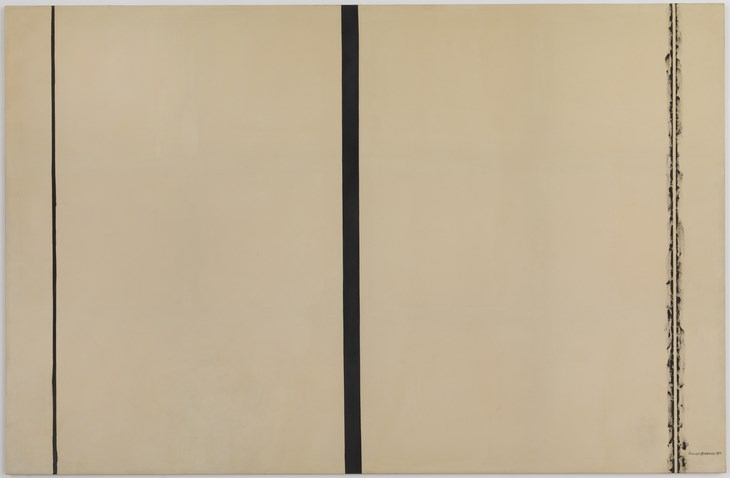 BARNETT NEWMAN SHINING FORTH (TO GEORGE) 1961 (SURGIT LA LUMIÈRE (POUR GEORGE) HUILE SUR TOILE, 290 X 442 CM DON DE LA SCALER FOUNDATION EN 1978 COLLECTION CENTRE POMPIDOU, MUSÉE NATIONAL D?ART MODERNE PHOTO : PHILIPPE MIGEAT/CENTRE POMPIDOU, MNAM-CCI/DIST. RMN-GP (C) 2015, THE BARNETT NEWMAN FOUNDATION / ADAGP, PARIS 2015
BARNETT NEWMAN SHINING FORTH (TO GEORGE) 1961 (SURGIT LA LUMIÈRE (POUR GEORGE) HUILE SUR TOILE, 290 X 442 CM DON DE LA SCALER FOUNDATION EN 1978 COLLECTION CENTRE POMPIDOU, MUSÉE NATIONAL D?ART MODERNE PHOTO : PHILIPPE MIGEAT/CENTRE POMPIDOU, MNAM-CCI/DIST. RMN-GP (C) 2015, THE BARNETT NEWMAN FOUNDATION / ADAGP, PARIS 2015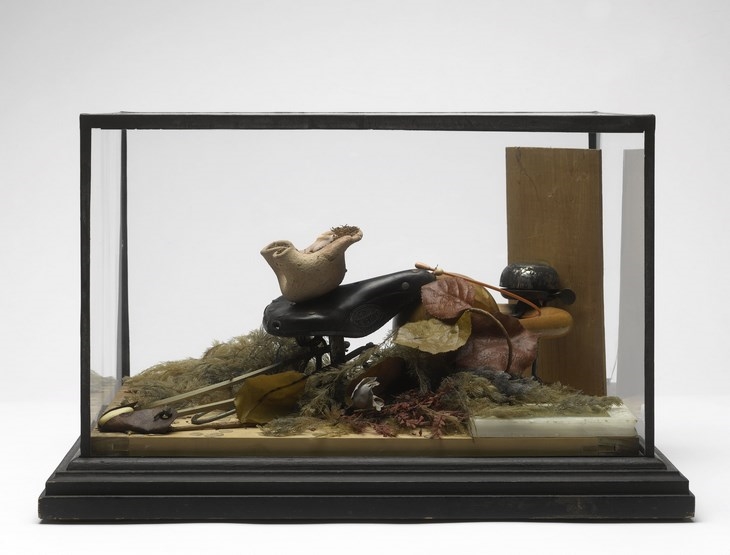 ANDRÉ BRETON OBJET À FONCTIONNEMENT SYMBOLIQUE, 1931 ASSEMBLAGE D?OBJETS DIVERS SUR PLANCHE DE BOIS 24,5 X 41,5 X 32 CM COLLECTION PARTICULIÈRE DÉPÔT AU MUSÉE NATIONAL D?ART MODERNE / CENTRE DE CRÉATION INDUSTRIELLE LE 03/04/2014 CENTRE POMPIDOU, MUSÉE NATIONAL D?ART MODERNE MNAM-CCI/DIST. RMN-GP PHOTO : GEORGES MEGUERDITCHIAN, CENTRE POMPIDOU (C) ADAGP, PARIS 2015
ANDRÉ BRETON OBJET À FONCTIONNEMENT SYMBOLIQUE, 1931 ASSEMBLAGE D?OBJETS DIVERS SUR PLANCHE DE BOIS 24,5 X 41,5 X 32 CM COLLECTION PARTICULIÈRE DÉPÔT AU MUSÉE NATIONAL D?ART MODERNE / CENTRE DE CRÉATION INDUSTRIELLE LE 03/04/2014 CENTRE POMPIDOU, MUSÉE NATIONAL D?ART MODERNE MNAM-CCI/DIST. RMN-GP PHOTO : GEORGES MEGUERDITCHIAN, CENTRE POMPIDOU (C) ADAGP, PARIS 2015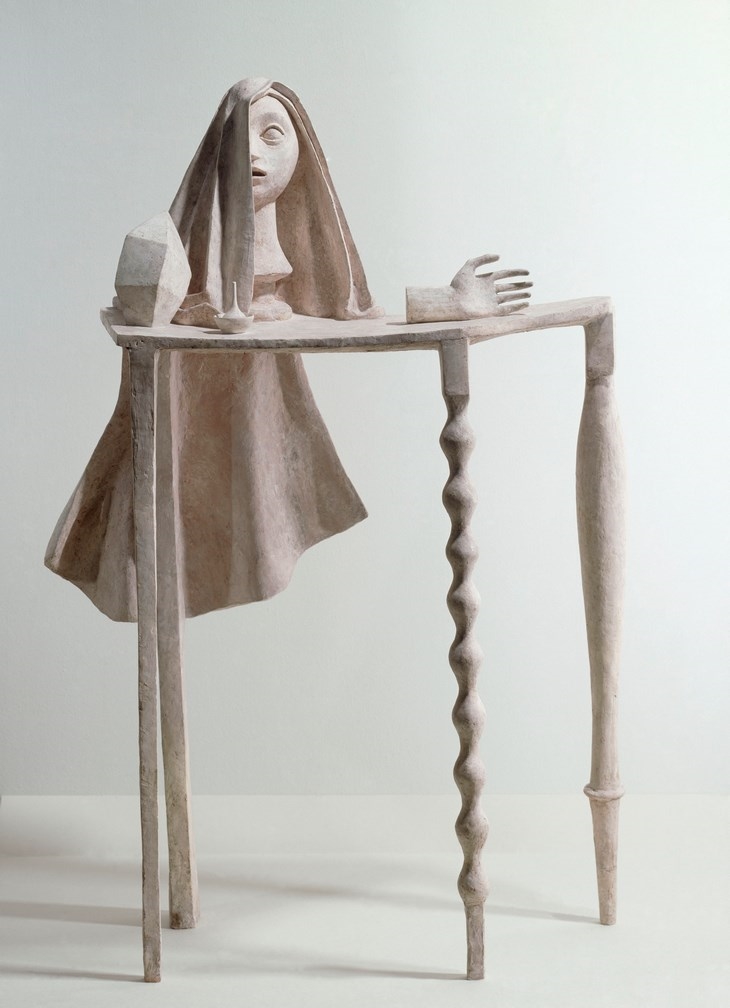 ALBERTO GIACOMETTI TABLE, 1933 TITRE ATTRIBUÉ : LA TABLE SURRÉALISTE CRÉÉE POUR L?EXPOSITION SURRÉALISTE, GALERIE PIERRE COLLE, PARIS, JUIN 1933 SCULPTURE ORIGINALE EN PLÂTRE, 148,5 X 103 X 43 CM DON DE VICOMTE CHARLES DE NOAILLES EN 1951 CRÉDIT PHOTOGRAPHIQUE : (C) CENTRE POMPIDOU, MNAM-CCI/ SERVICE DE LA DOCUMENTATION PHOTOGRAPHIQUE DU MNAM/DIST. RMN-GP (C) SUCCESSION ALBERTO GIACOMETTI (FONDATION ALBERTO ET ANNETTE GIACOMETTI, PARIS ET ADAGP, PARIS 2015)
ALBERTO GIACOMETTI TABLE, 1933 TITRE ATTRIBUÉ : LA TABLE SURRÉALISTE CRÉÉE POUR L?EXPOSITION SURRÉALISTE, GALERIE PIERRE COLLE, PARIS, JUIN 1933 SCULPTURE ORIGINALE EN PLÂTRE, 148,5 X 103 X 43 CM DON DE VICOMTE CHARLES DE NOAILLES EN 1951 CRÉDIT PHOTOGRAPHIQUE : (C) CENTRE POMPIDOU, MNAM-CCI/ SERVICE DE LA DOCUMENTATION PHOTOGRAPHIQUE DU MNAM/DIST. RMN-GP (C) SUCCESSION ALBERTO GIACOMETTI (FONDATION ALBERTO ET ANNETTE GIACOMETTI, PARIS ET ADAGP, PARIS 2015)READ ALSO: HOSPITALITY: SUMMER STUDENT WORKSHOP FOR ART & ARCHITECTURE / ATHENS SCHOOL OF FINE ARTS & NTUA